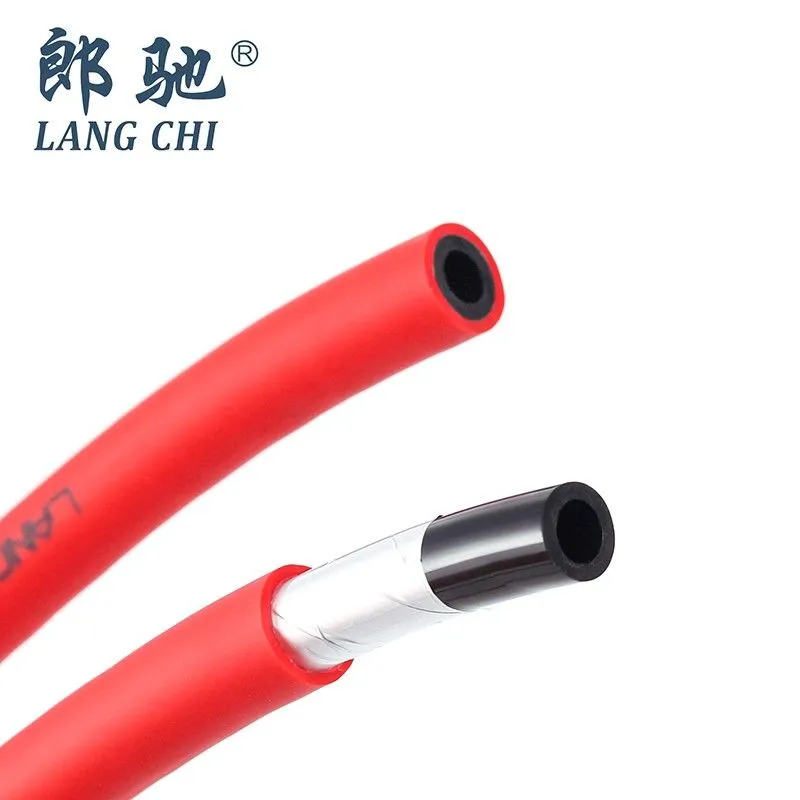
- English
- Español
- Português
- русский
- Français
- 日本語
- Deutsch
- tiếng Việt
- Italiano
- Nederlands
- ภาษาไทย
- Polski
- 한국어
- Svenska
- magyar
- Malay
- বাংলা ভাষার
- Dansk
- Suomi
- हिन्दी
- Pilipino
- Türkçe
- Gaeilge
- العربية
- Indonesia
- Norsk
- تمل
- český
- ελληνικά
- український
- Javanese
- فارسی
- தமிழ்
- తెలుగు
- नेपाली
- Burmese
- български
- ລາວ
- Latine
- Қазақша
- Euskal
- Azərbaycan
- Slovenský jazyk
- Македонски
- Lietuvos
- Eesti Keel
- Română
- Slovenski
- मराठी
- Srpski језик
Which is better PU tube or nylon tube?
2024-09-19
The choice between PU (Polyurethane) tube and nylon tube depends on the specific application, as both materials have different properties that make them suitable for various uses. Here's a comparison to help determine which is better for your needs:
1. Flexibility
- PU Tube: Polyurethane tubes are more flexible and elastic than nylon tubes. They maintain flexibility even in cold temperatures, which makes them ideal for applications requiring bending and movement, such as pneumatic control systems or robotics.
- Nylon Tube: Nylon tubes are more rigid, providing greater dimensional stability and less flexibility. This rigidity makes them more suitable for applications where a stable, straight line is needed.
Winner: PU Tube (for applications requiring flexibility)
2. Abrasion Resistance
- PU Tube: While flexible, PU tubing is also highly resistant to wear and abrasion, making it suitable for dynamic or high-movement environments.
- Nylon Tube: Nylon has superior abrasion resistance and is better suited for applications where the tubing might encounter friction, rough surfaces, or mechanical wear.
Winner: Nylon Tube (for abrasion resistance)

3. Chemical Resistance
- PU Tube: Polyurethane has good resistance to chemicals but can be affected by certain chemicals like acids, solvents, and fuels.
- Nylon Tube: Nylon has excellent chemical resistance to a wide variety of substances, including oils, solvents, and fuels, making it better suited for chemical and hydraulic applications.
Winner: Nylon Tube (for chemical resistance)
4. Pressure Tolerance
- PU Tube: Polyurethane tubes can handle moderate pressure but are not as high-pressure rated as nylon tubes.
- Nylon Tube: Nylon has a higher pressure rating, making it the preferred choice for high-pressure applications such as pneumatic and hydraulic systems.
Winner: Nylon Tube (for high-pressure applications)
5. Temperature Resistance
- PU Tube: PU tubing has a lower temperature tolerance and may degrade under extreme heat. It typically withstands temperatures up to about 60°C (140°F).
- Nylon Tube: Nylon tubes have a higher heat resistance and can handle temperatures up to 100°C (212°F), making them suitable for high-temperature environments.
Winner: Nylon Tube (for high-temperature applications)
6. Cost
- PU Tube: PU tubing is generally less expensive than nylon, making it a cost-effective option for many applications.
- Nylon Tube: Nylon tends to be more expensive due to its higher performance characteristics.
Winner: PU Tube (for cost)
7. Moisture Absorption
- PU Tube: Polyurethane tubing is less prone to moisture absorption, making it more suitable for applications involving exposure to moisture or water.
- Nylon Tube: Nylon tubing tends to absorb moisture, which can slightly affect its dimensional stability and performance over time in humid or wet conditions.
Winner: PU Tube (for moisture resistance)
Conclusion:
- Choose PU Tube if you need a flexible, cost-effective option that performs well in low-pressure, dynamic, or humid environments.
- Choose Nylon Tube if you require higher pressure resistance, better chemical and abrasion resistance, or if the tubing will be used in high-temperature or industrial environments.
The choice depends on the specific conditions of your application, but nylon tubing is typically better for high-performance, industrial settings, while PU tubing is ideal for more flexible, low-pressure, and dynamic systems.
LANG CHI is a professional PU tube manufacturer and supplier in China, as well as a high-tech enterprise integrating research and development, production, sales, and international trade. Visit our website at https://www.langchi-pneumatic.com to learn more about our products. For inquiries, you can reach us at nblangchi@nb-lc.cn.



